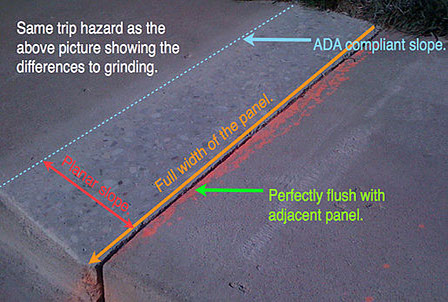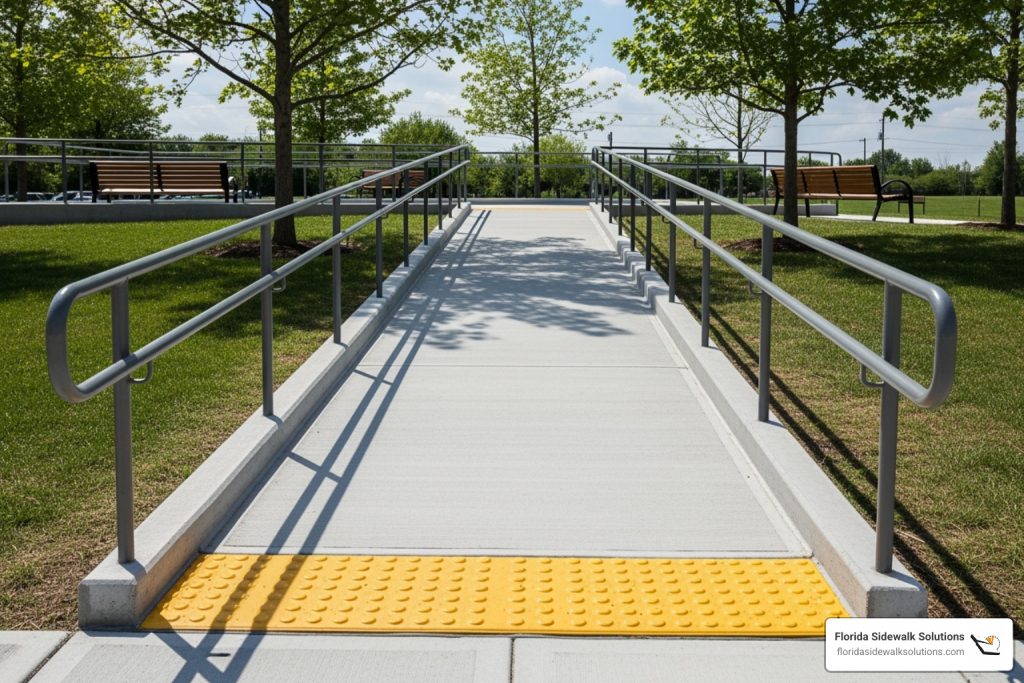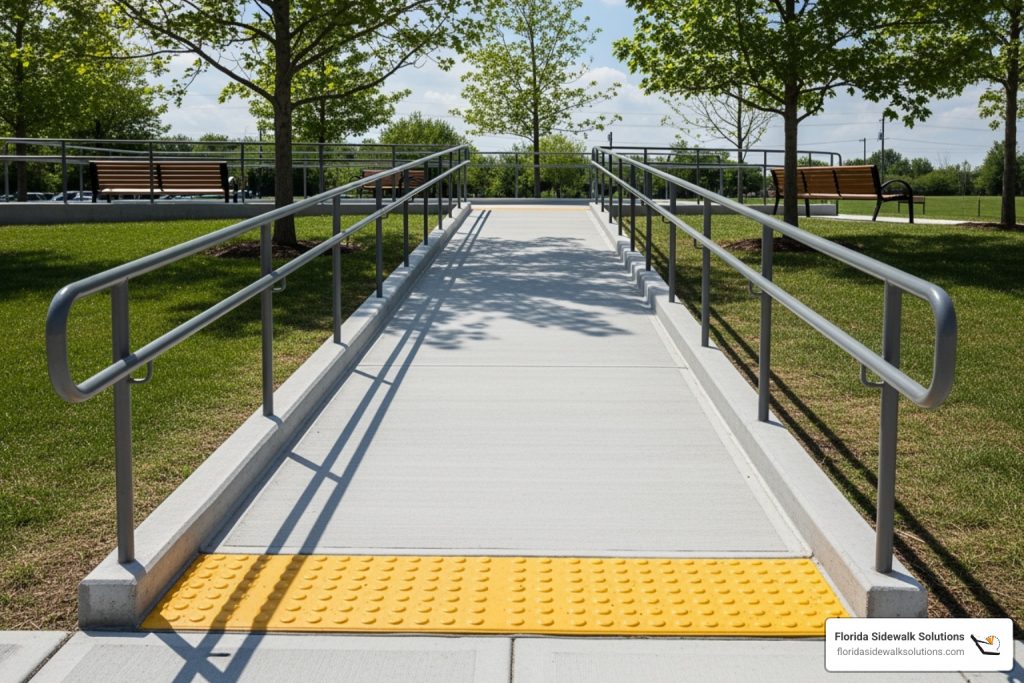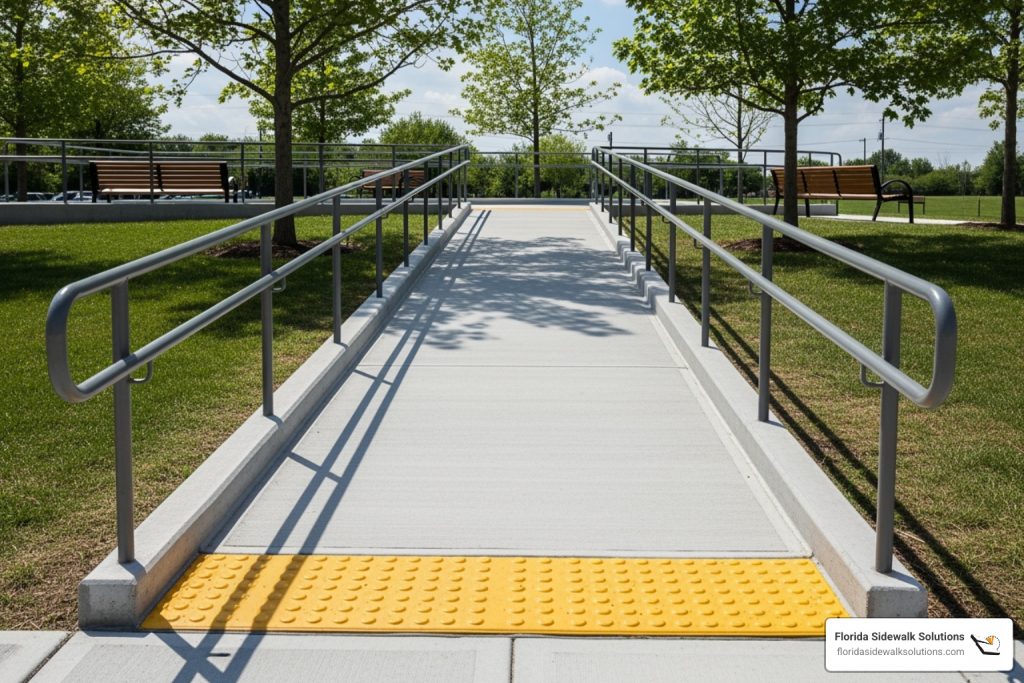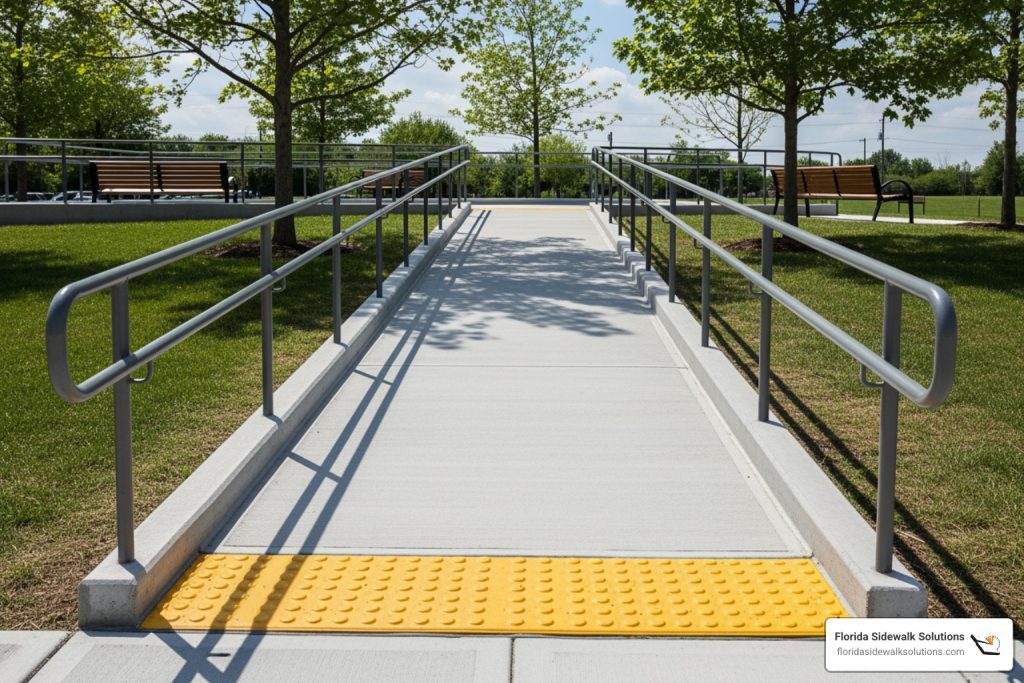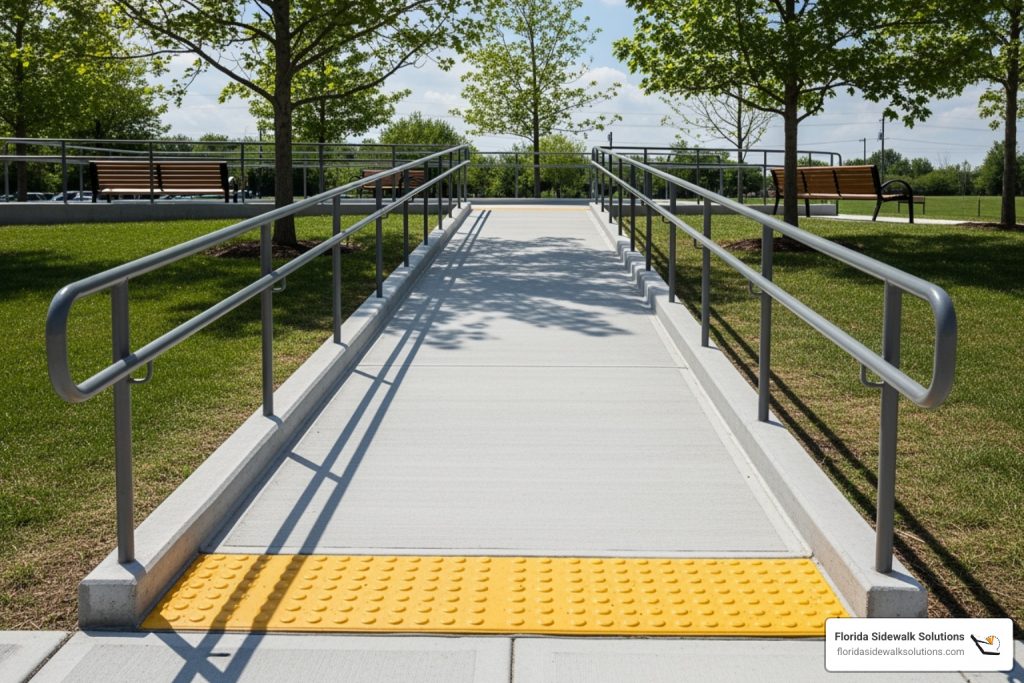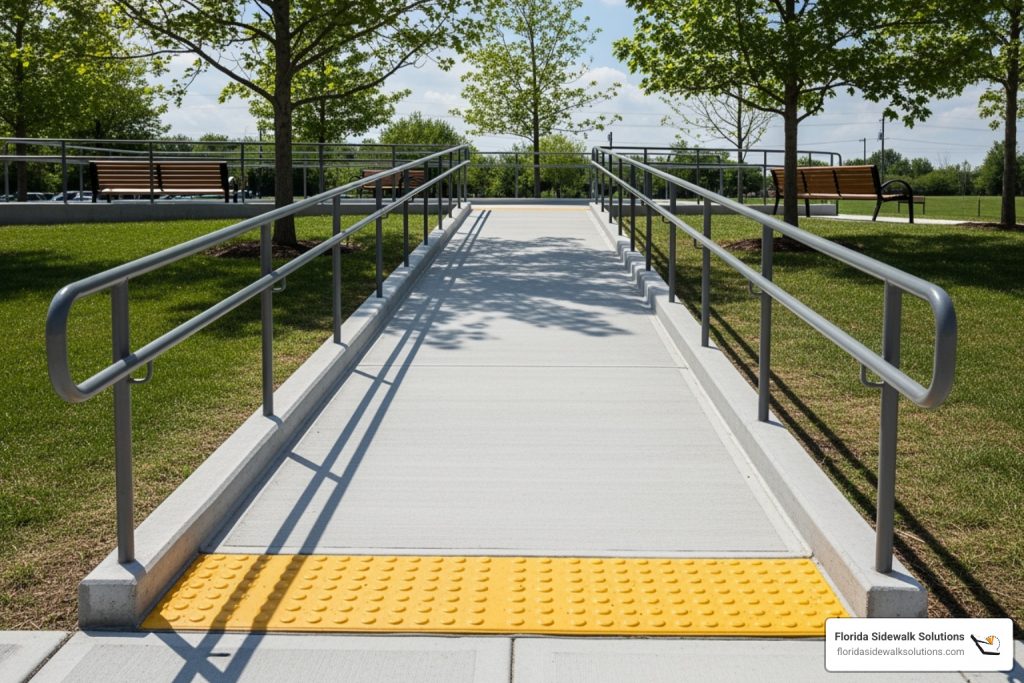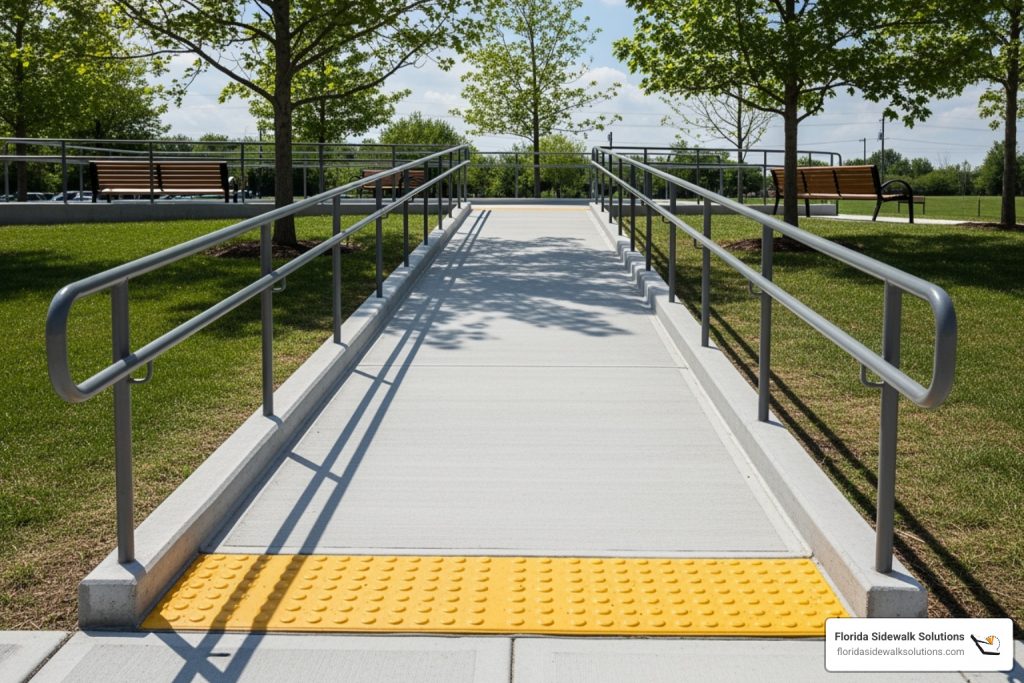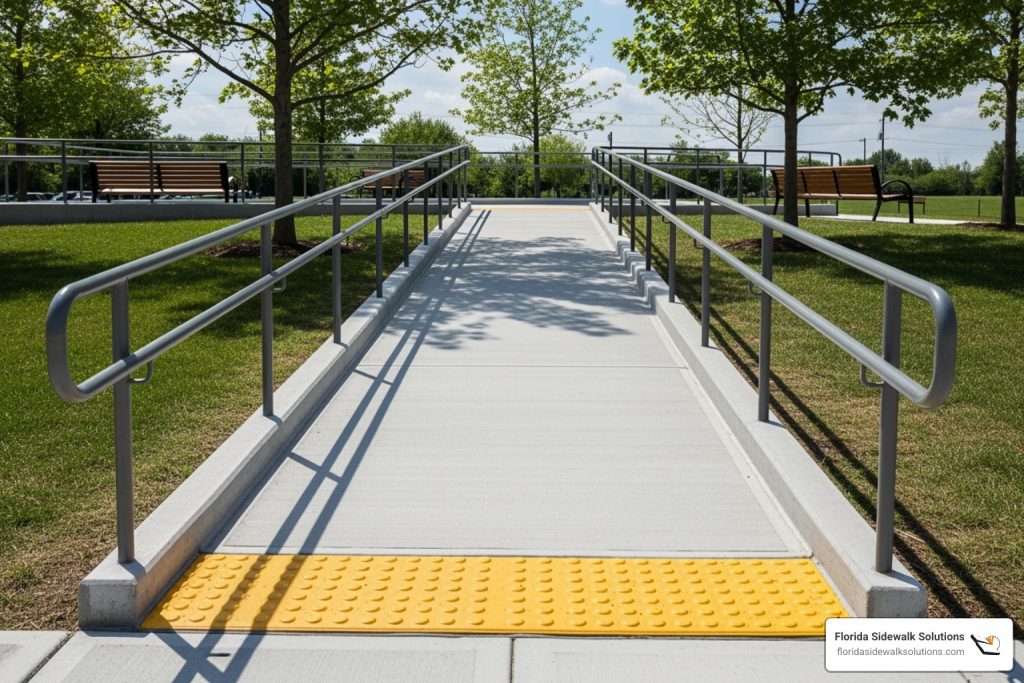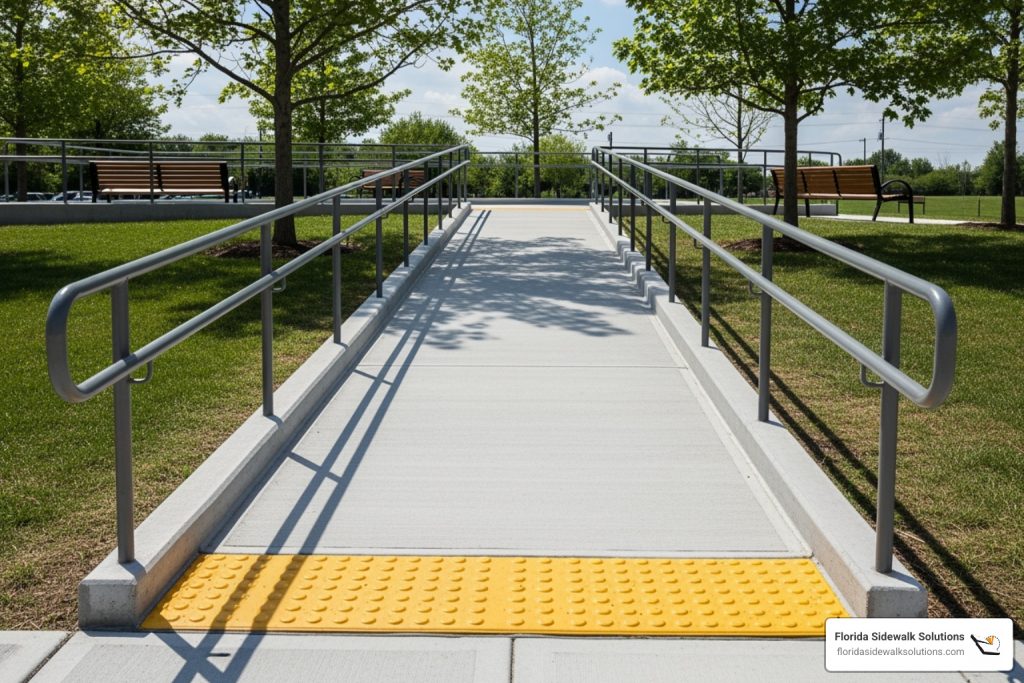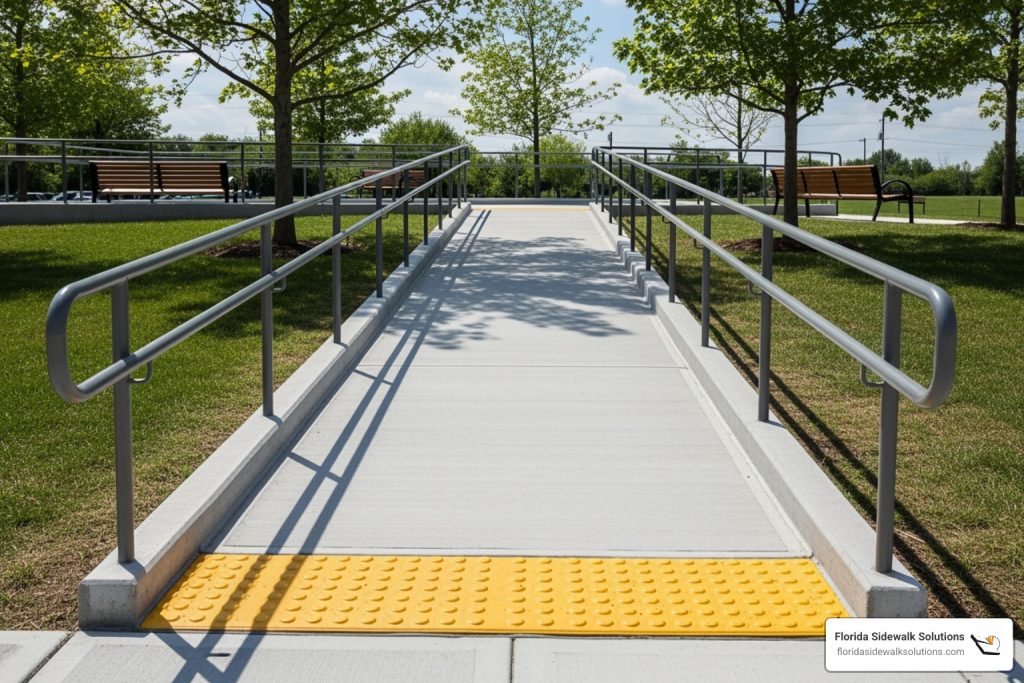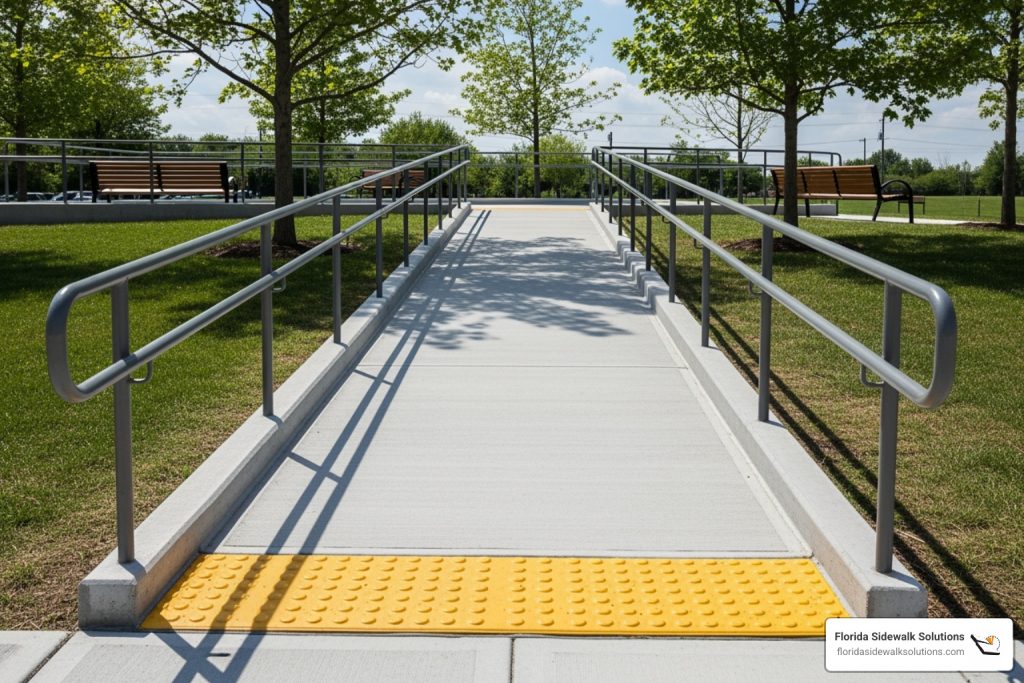ADA Compliance Regulations
ADA Compliance Regulations exist to protect both the disabled and non-disabled pedestrians’ rights in the event of an accident. Florida Sidewalk Solutions patented repair methods allow property owners and managers to have their sidewalks and walkways repaired to bring them in line with the ADA compliance regulations. Should your sidewalk or walkway fall out of regulation, it can be a serious issue. This is because the rules set by the ADA are parameters that determine the safety thresholds of these public areas. Being out of spec means a higher risk for someone to get seriously hurt. If such an injury were to occur due to a compliance issue, the owner and/or property manager(s) of the sidewalk or walkway would be legally liable for said injury. Additionally, inspections that reveal such violations, or the event of an injury to such, will result in heavy fines.
This is why it is so important as a current, or prospective property owner or manager to be aware of the ADA Compliance regulations. Read below to get a shortlist of the basic ADA compliance rules, but make sure to visit the ADAs website for a full rundown.
- Width:
There are two thresholds for sidewalk width, a bare minimum and a recommended. 3 feet – or 36 inches, is the minimum width permissible by the average portions of the sidewalk. Keep in mind, however, that this minimum is below the recommended threshold of 5 feet – or 60 inches- wide. If a sidewalk falls below this recommended threshold it will require additional passing spaces at least every 200 feet to allow pedestrians to safely move around each other. Sidewalk width requirements are especially important for wheelchair-bound individuals. For ADA compliance, the minimum sidewalk width is 36 inches (3 feet), though sidewalks can be wider. - Texture:
Sidewalk texture needs to be pro-friction and slip-resistant. There can be no cracks or uneven areas, which leads us to the next item. - No Trip Hazards
A sidewalk or walkway cannot have a sudden height differential of 1/4″ or more. Over time, the land underneath the sidewalks becomes uneven as well as other factors like damages, erosion, weather, etc. If this height difference exists, it has to be taken care of with a repair before an issue occurs resulting in injury and liability on part of the property owner. - Slope:
A sidewalk Cannot Have a slope ratio of greater than 1:20 at any point or it is considered a ramp- which has its own set of rules. - Curbs:
Curb Ramps are required to safely lead into any sidewalk from areas like intersections. The ramps must be at least 3 feet wide and have a slope less than 1:12.
Call us: 954-514-7218
Related Media: Affordable Sidewalk Repair, Done Right
Follow us on social media: Facebook | Instagram | LinkedIn

